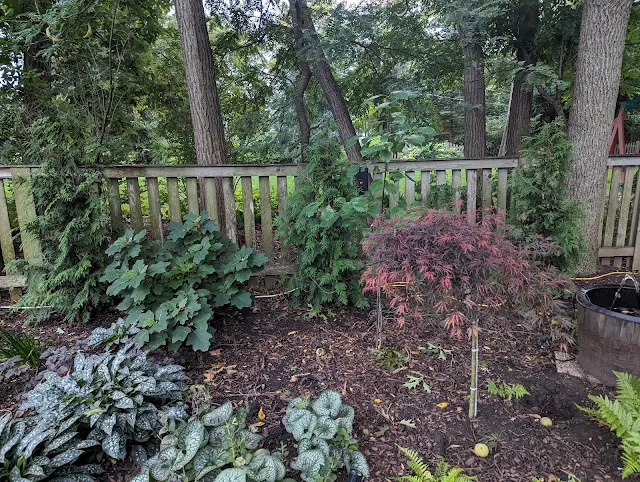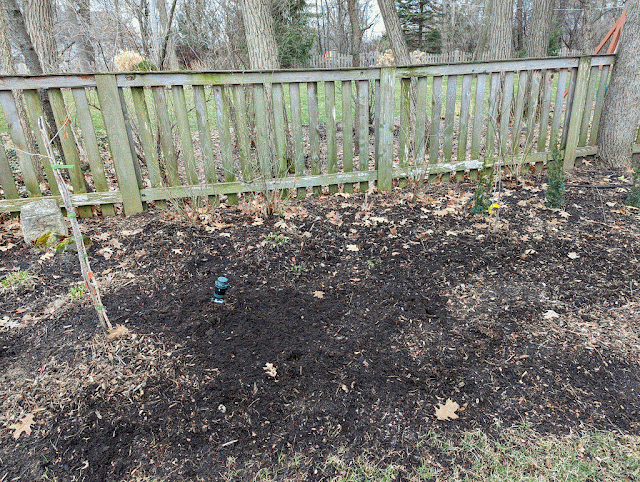Green Giant Thujas - Lilac Replacement 17 Months Later - September 2023
In the Spring of 2022 (17 months ago), I undertook what I called (at that time) the Lilac Replacement Project where I dug up and transplanted a number of Lilacs. And replaced them with some upright evergreens. Those upright evergreens were three Green Giant Thujas that I bought at the orange big box store. I planted three in this spot and three on the other side. Two of those died, leaving me with four of the six originally planted remaining.
When I look back at the photos of those Green Giant Thujas right after they were planted (April 2022), it appears that the top-tip (apical meristem) of them is right around the top of the fence.
Today - they're at least a foot over the top of the fence height. See below for the current view - with the Green Giant Thujas in the back against the fence.
That's (obviously) not the only thing happening in this photo, so I'll document some of the other changes in this post - for the garden diary.
The Thujas have survived here, despite being in the shade. They've had plenty of water, though. That's a learning. I could put more of these in other spots in the garden where I was good about watering. Something to think about for 2024.
Also in the photo above, you can see one of the Snowqueen Oakleaf Hydrangeas that I planted this Summer. They've done VERY well and are tucked in between the Thujas. On the right is the Inaba Shadire high-grafted Japanese Maple from this Summer. On the left is one of the (Fall 2022 transplanted) Twinkle Toes Pulmonaria and a Jack of Diamonds Brunnera in the bottom/middle of the photo with its silver foliage. If you look closely, you'll also find a tiny Chiquapin Oak tree that is planted behind the JM and in front of the middle Thuja. And, lastly...there are three different ferns showing: far right is an Autumn Fern, bottom is a peek at the Cristata the King Crested Wood Fern that I added this year and lastly is a remnant of an Ostrich Fern that came back after I dug most of them out and moved to the far back to naturalize.
Here's an animated before/after look at this area:
That's a big change, isn't it? I suppose it isn't quite a fair comparison as the original photo was when everything was dormant, so the lilacs that are present have no foliage on them. But, it still makes the case for upright evergreens at the back of your borders or garden beds.





Comments
Post a Comment
Be nice to each other here.